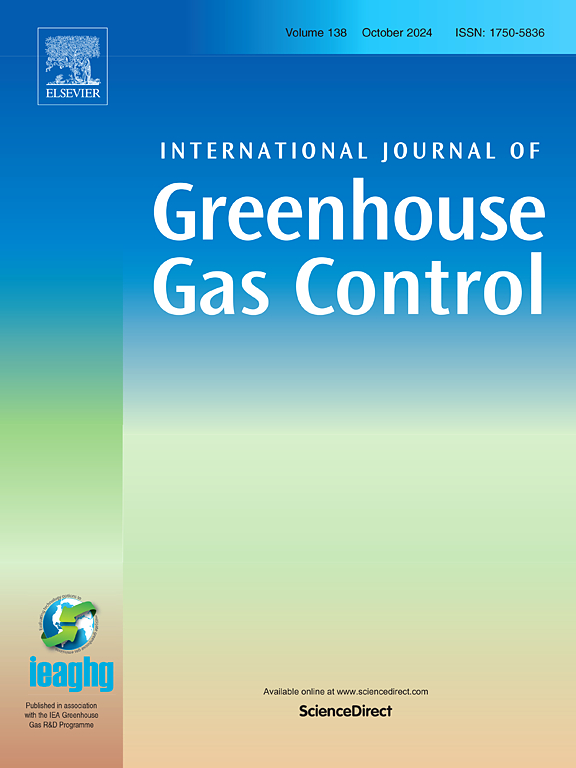An experimental study of the mineral carbonation potential of the Jizan Group basalts
IF 4.6
3区 工程技术
Q2 ENERGY & FUELS
International Journal of Greenhouse Gas Control
Pub Date : 2025-02-01
DOI:10.1016/j.ijggc.2025.104323
引用次数: 0
Abstract
The ability of Jizan basalts, a potential subsurface mineral carbon storage formation located in southwest Saudi Arabia, to carbonate water-dissolved CO2 has been examined through a set of closed system batch fluid-rock experiments performed at 60 °C. Two Jizan basalt samples were collected from a CO2 injection pilot test well at depths of 375 and 665 m below surface. The basalt samples are dominated by intermediate plagioclase (An) and a Ca-Mg pyroxene with minor chlorite and zeolite. The cleaned basalts were placed into individual sealed reactors along with either aqueous sodium carbonate or sodium bicarbonate solutions, and the experiments were conducted over a period of up to 250 days. The reactive fluid compositions in all experiments suggest that the dissolution of plagioclase dominates the basalt dissolution; calculations suggest that the fluids rapidly approach pyroxene equilibrium. The reactive fluids rapidly become saturated with respect to calcite. SEM imaging and EDS analysis confirm calcite growth on the basalt grains. In contrast, Al-bearing secondary minerals were not identified despite apparently being retained by the solid phases during the experiments. Notably, the dissolution rates of the Jizan basalts slowed considerably over time during the static batch experiments. This observation suggests that the relatively rapid dissolution of basalt by acidic CO2-rich fluids in a dynamic flow system creating a dissolution zone and precipitation zone, is essential for efficient in situ mineralization of CO2 in basalts.
求助全文
约1分钟内获得全文
求助全文
来源期刊
CiteScore
9.20
自引率
10.30%
发文量
199
审稿时长
4.8 months
期刊介绍:
The International Journal of Greenhouse Gas Control is a peer reviewed journal focusing on scientific and engineering developments in greenhouse gas control through capture and storage at large stationary emitters in the power sector and in other major resource, manufacturing and production industries. The Journal covers all greenhouse gas emissions within the power and industrial sectors, and comprises both technical and non-technical related literature in one volume. Original research, review and comments papers are included.

 求助内容:
求助内容: 应助结果提醒方式:
应助结果提醒方式:


